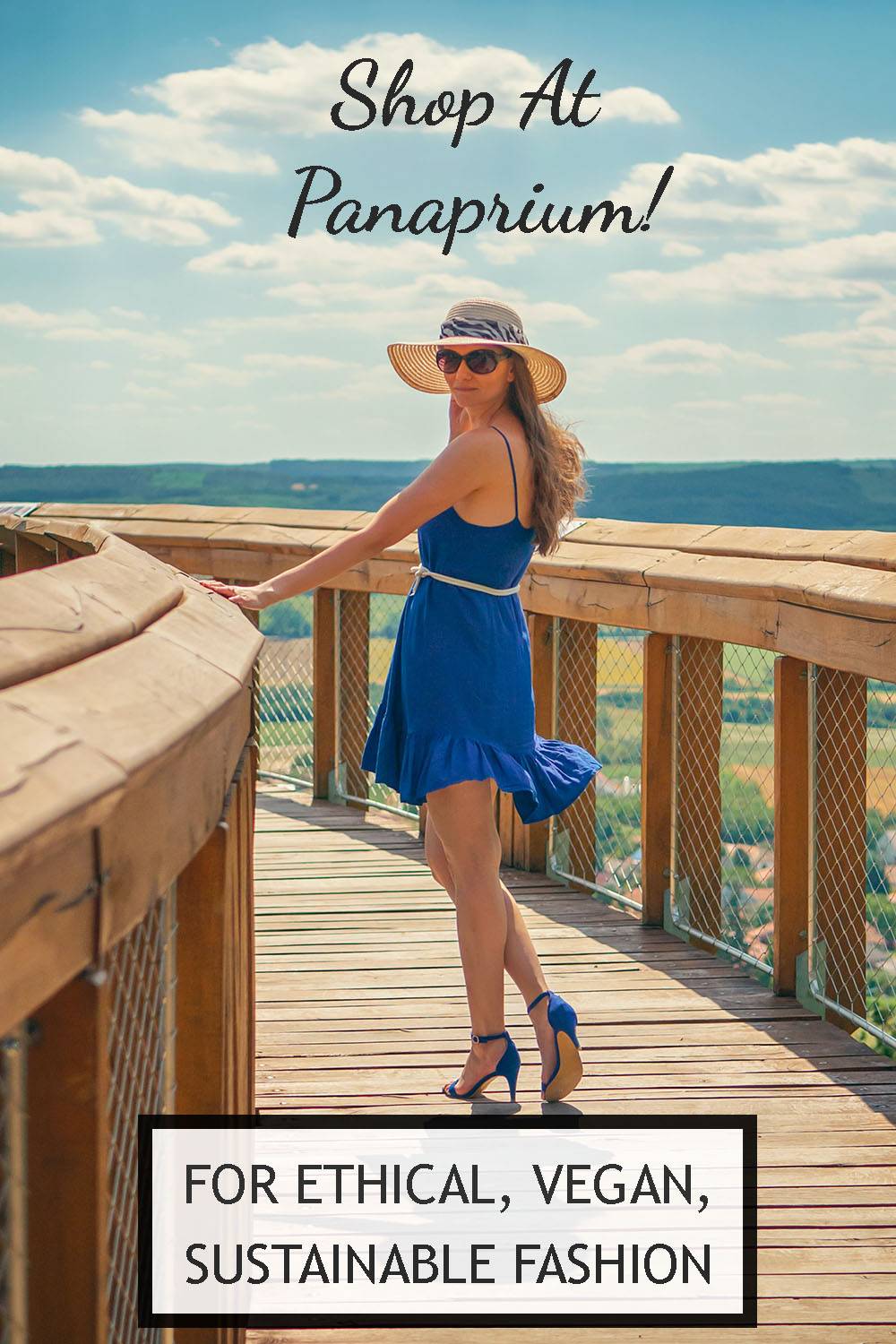
Satin fabric is a textile widely used in the clothing industry to make fashion products, apparel, and accessories. It's designed as an alternative to silk as it is cheaper and easier to produce.
Satin fabric can be a more ethical and eco-friendly replacement for silk if it's made of organic or recycled materials. Many clothing brands and fashion designers use it to promote recycling, mindful consumption, and waste reduction.
The main advantage of satin fabric is its lower cost compared to high-end and luxurious silk used in the fashion world. This kind of fabric is also animal-free and cruelty-free and vegan-friendly.
Although satin fabric offers many benefits, it also has many drawbacks and isn't as sustainable as it seems. Many manufacturers produce unsustainable satin that pollutes the environment.
To help you make more mindful purchasing decisions as a well-informed consumer, here is the truth about sustainable satin fabric that most companies are hiding from you.
Panaprium is proud to be 100% independent, free of any influence, and not sponsored. We carefully handpick products from brands we trust. Thank you so much for buying something through our link, as we may earn a commission that supports us.
What is satin fabric?

Satin fabric is a textile generally made of synthetic fibers like polyester or semi-synthetic fibers like rayon. Polyester is petroleum-based and the most widely used fiber worldwide. It represents more than half of global fiber production.
Some satin fabrics are made of rayon, commonly referred to as viscose or viscose rayon, a whole group of regenerated cellulosic fibers similar to modal, acetate, cupro, and lyocell.
Rayon is made from cellulose-based materials such as trees, bamboo, soy, fruits, and agricultural waste. But rayon manufacturing requires heavy processing and is usually very toxic.
What is satin used for?

Satin fabric is often used in the fashion industry to make affordable clothing, shoes, bags, accessories, and jewelry. It's also used to make bedding, household textiles, home decor, upholstery, and furniture.
The popularity of satin is rising. Fashion brands and clothing designers use satin to meet consumers' demands for affordable, lustrous clothing. It's ideal for making cheap garments that look high-end.
In the fashion industry, satin fabrics make knitwear, hats, suits, blouses, evening dresses, formal shirts, loungewear, pajamas, undergarments, and more.
You can find satin in homeware, furniture, upholstery, bathrobes, drapes, bed sheets, curtains, and home decor, like other soft and luxurious fabrics as a cheaper alternative.
The market for satin fabrics is expected to slightly rise in the coming years, as new apparel and home furnishing applications develop, especially in China.
How is satin made?

Satin fabric is made through a special weaving technique that produces soft, lustrous, shiny textiles with a fabulous drape. It's produced by gliding a few yarns across the weft before putting them under one weft thread and repeating the process.
Satin silk was originally made entirely from silk as an imported fabric. It was very expensive, luxurious, high-end, and only worn on special occasions.
Modern satin fabric is a synthetic alternative to silk. It's much cheaper and easier to produce and maintain and keeps its glossy, lustrous, and smooth qualities.
Satin made of rayon fibers is manufactured from wood pulp. Its fabrication involves many different processes and is very chemically intense using chemicals such as carbon disulfide, sulfuric acid, ammonia, acetone, or caustic soda.
Rayon is produced by the dissolution of a cellulosic solution. Natural cellulose is converted into a soluble compound using strong acids and chemicals. A heated mechanical spinneret with tiny holes then forms filaments of regenerated cellulose out of the solution.
The filaments are cooled down, washed, purified, and extended to make longer filaments. They are then ready to be spun into yarns, which are woven into fabrics by textile manufacturers.
Is satin a good fabric?

Satin made of synthetic fibers is an affordable fabric widely used in clothing for a high-end look. It's a cheaper alternative to silk to create luxurious garments for special occasions.
Satin fabric is very soft, comfortable, lightweight, breathable, and anti-bacterial. It's a material found in a lot of everyday clothing as a cheaper alternative.
Satin fabric is very pleasant to the touch, drapes, and hangs well. It has good resistance to wrinkling and pilling, with multiple sheens, and color options.
However, satin fabric doesn't resist high temperatures. It has low thermal stability and will lose longevity when exposed directly to UV and sunlight.
Is satin a sustainable fabric?

Not all satin is eco-friendly but it can be a sustainable fabric if it's ethically made from organic or recycled materials like certified organic cotton or recycled polyester.
Organic cotton is so much better than conventional cotton because it's non-GMO and grown organically, without the use of hazardous herbicides, pesticides, or fertilizers.
It's also ethical, sustainable, and environmentally friendly. Buying organic cotton fabric helps the planet, the people, and the animals living on it. But it may be difficult for some people to include it in their monthly clothing budget.
Recycled polyester is a more eco-friendly alternative to the raw material from oil. Its manufacturing process begins with the collection of PET plastic bottles.
The bottles are sorted, chopped, melted, and reformulated into recycled polyester chips. Chips are then melted and extruded through spinning to form long filaments of polyester fiber.
But not all satin fabrics are recycled. Most of them use polluting synthetic fibers that damage the environment through overexploitation of resources and plastic waste generation.
Sustainable satin can also be made from eco-friendly regenerated fibers like lyocell. It's a great alternative to petroleum-based textiles such as polyester.
Lyocell is the third generation technology of rayon, after viscose and modal. It's very breathable, lightweight, durable, soft, anti-bacterial, and remains odor-free much longer than cotton.
Sustainable lyocell production facilities can almost fully recover and reuse water and chemicals with closed-loop processes. When more than 99% of the solvent is recycled, lyocell production is considered eco-friendly.
Sustainable forest management is also necessary to consider man-made cellulosic fiber production environmentally friendly. Textile production is responsible for massive deforestation, destruction of ecosystems, and carbon emissions.
Sustainable satin vs silk

Sustainable satin made of organic or recycled fabrics is much better than silk. The silk industry is as exploitative and cruel today as it was centuries ago.
Silk is still considered one of the finest fibers in fashion worldwide. The most expensive silk is mulberry silk, made from the cocoon of caterpillars that eat mulberry leaves over several weeks in their pupal stage.
Silk is an animal-derived product that comes from insects called silkworms. The silk of moth caterpillars is mostly used for textile manufacturing. Other animals such as leafhoppers, flies, ants, wasps, bees, beetles, and spiders can also produce silk.
In the silk industry, silkworms don't go past the pupal stage. Instead, they are killed by being placed in boiling water to preserve the cocoons' value, thread length, and quality.
Silk production is very cruel to animals as it destroys hundreds of thousands of sensitive silkworms every year to harvest silk from their cocoons.
Instead of buying silk, choose the many animal-free alternatives available today. One of them is sustainable satin fabric. You can make the fashion industry more ethical and environmentally friendly through your choices.
Is satin biodegradable?

Satin fabric is generally not biodegradable in the large majority of cases. Most satin fabrics are made of synthetic fibers like polyester, which are not biodegradable.
Sustainable satin fabric can be biodegradable if it's made of organic fabrics like organic cotton. Natural and organic fibers biodegrade quickly and are safe when they exclude harmful chemicals.
Satin fabric, when made of rayon, can be biodegradable. But it takes from a few weeks to a few years for rayon to biodegrade, depending on the type of rayon fabric and processes used during manufacturing.
Depending on the conditions present in the environment, rayon can biodegrade in a few weeks. But it can also take up to many years to fully decompose under cold conditions.
A significant concern of rayon fabrication is the necessity for large amounts of resources and heavy chemicals that are toxic to humans and ecosystems if released untreated into the nearby environment.
Why is satin unsustainable?

Satin fabric is a textile generally made of synthetic fibers like polyester or semi-synthetic fibers like rayon. Both of these fiber types are extremely polluting and unsustainable.
Rayon is a cellulosic fiber made from natural cellulose derived from wood pulp. That is why it's often marketed as eco-friendly. But it's harmful to the environment and human health as it requires toxic chemicals for its fabrication.
Rayon production involves many different processes and is very chemically intense using toxic chemicals such as carbon disulfide, sulfuric acid, ammonia, acetone, or caustic soda.
Textiles made from man-made fibers such as rayon are also regarded as an important source of microfibers and contamination for marine environments.
The volume of textile microfibers entering the world's oceans is increasing at an alarming rate. Microfibers facilitate the transfer of pollutants, monomers, and plastic additives to organisms with uncertain consequences for their health.
Even washing polyester fabrics release plastic microfibers into waterways that pollute entire food chains, kill land and marine wildlife, and endanger human health.
They escape through our plumbing and sewage systems. The water expelled from our washing machines transports these fibers to rivers, lakes, and oceans.
Clothing brands using sustainable satin
For their new collections, many ethical fashion labels now use sustainable satin. They design, manufacture, and market high-quality clothing made of eco-friendly materials such as organic cotton, recycled polyester, or regenerated lyocell fibers.
But sustainable fashion isn't only about material sourcing. It's also important that brands and retailers guarantee substantially fair, ecological, and resource-efficient manufacturing conditions.
Here are some fashion brands that produce eco-friendly clothing from sustainable satin:
Was this article helpful to you? Please tell us what you liked or didn't like in the comments below.






























0 comments